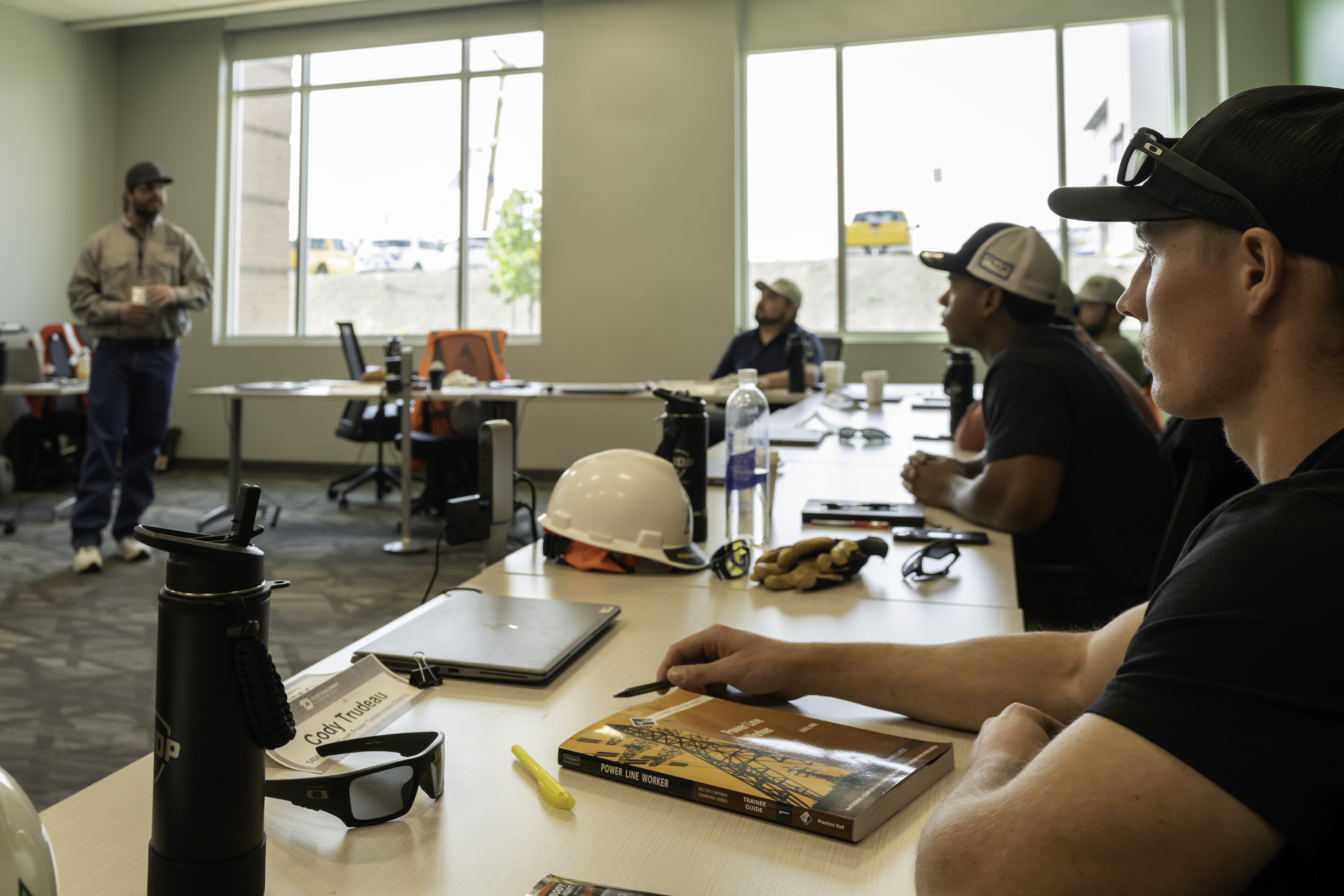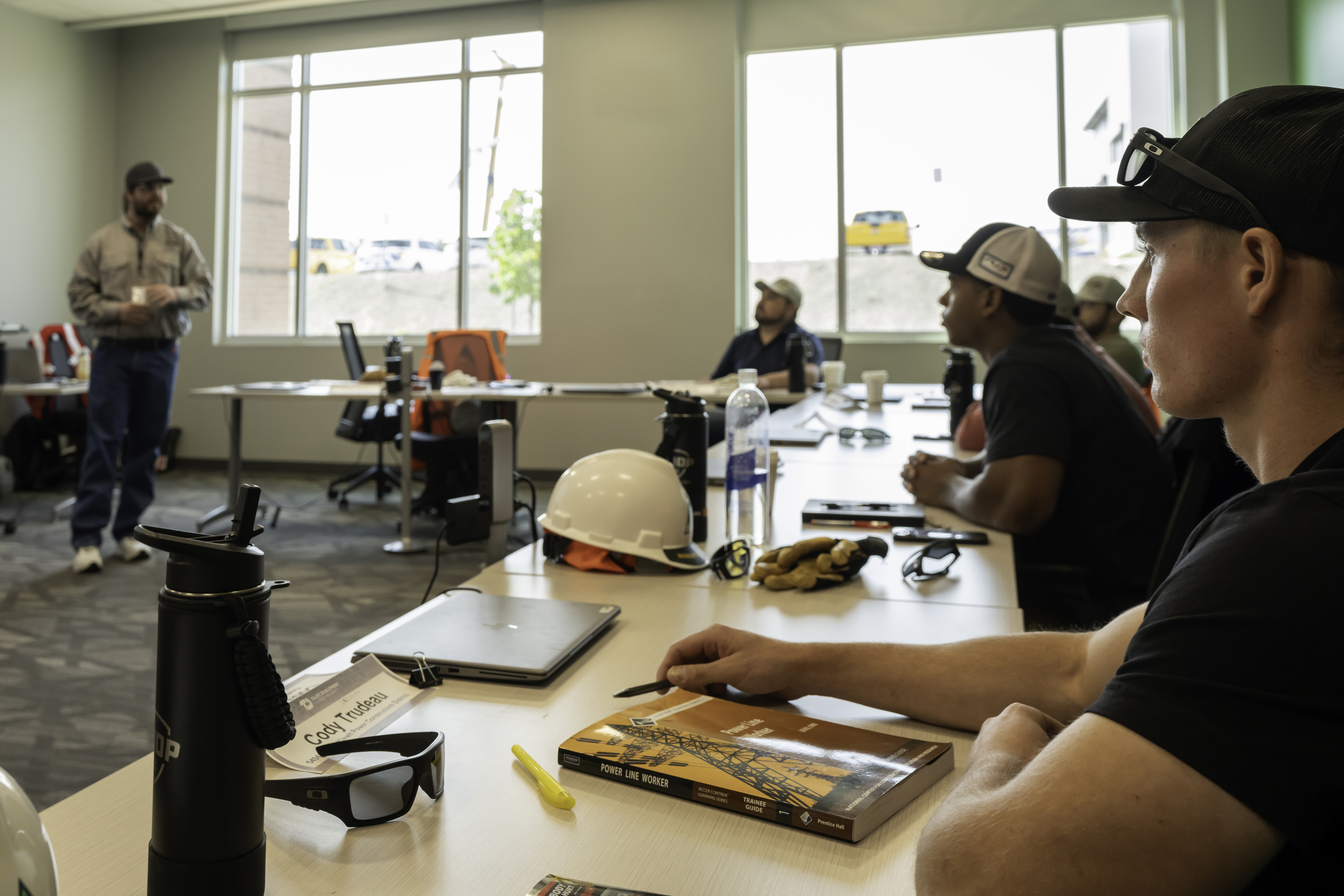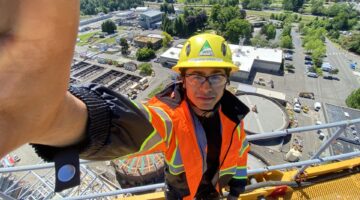Kiewit is pushing boundaries by embracing technology that creates invisible guardrails, helping protect its people and its projects.
Construction sites are bustling hubs of activity, where precision and safety must go hand in hand. In these environments, even a small misstep can have significant consequences such as injuries or property damage. To address these challenges, Kiewit is turning to cutting-edge tools like e-fencing and overhead proximity sensors. These technologies are reshaping safety practices, providing innovative ways to protect workers and streamline operations.
How e-fencing works
E-fencing, sometimes referred to as geofencing, provides a virtual boundary system for heavy machinery, by using sensors to define operational zones. This system can restrict swing angles, limit the height of equipment and prevent encroachments into hazardous areas. Essentially, this 2D “electronic fencing” ensures that operators stay within predefined safe operating boundaries, minimizing risks and eliminating the need for physical barriers. Its key features include:
- E-swing: Restricts the machine’s swing range
- E-wall: Prevents extensions beyond a set
boundary - Cab avoidance: Blocks attachments from entering the
cab area - E-ceiling and e-floor: Limits upward and downward
movements to prevent excessive height or depth
E-fencing technology is primarily integrated into Caterpillar (CAT) excavators. The term “e-fencing” was coined by CAT, and provides the core functionality in their machines, setting the standard for this type of technology on construction sites.
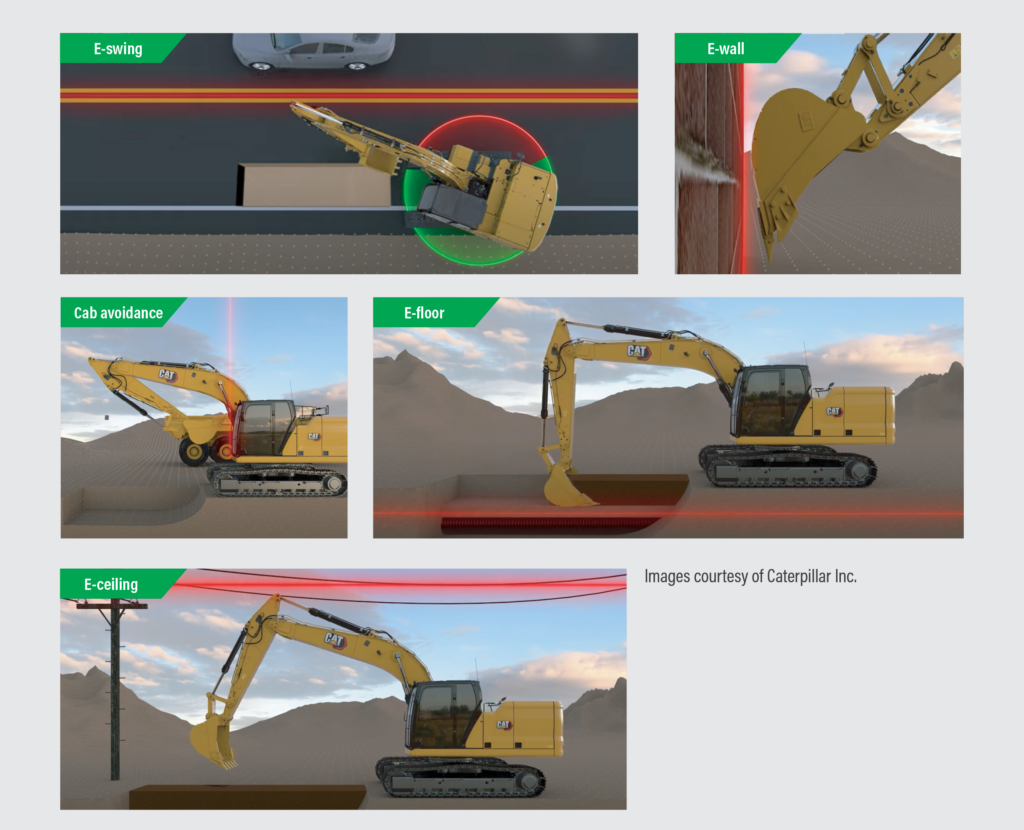
Proximity to power
Overhead proximity sensors serve as an additional safety measure, particularly in environments with live powerlines. Kiewit is using this technology on the Mill Creek 5 Natural Gas Combined Cycle (NGCC) project in Louisville, Kentucky. This project is part of a broader effort to modernize an existing coal-fired power plant. The addition of a 645 MW 1×1 GE Power Island is designed to lower carbon emissions while delivering more efficient energy to surrounding communities.
Given that powerlines run through the site, safety becomes even more important and overhead proximity sensors are helpful in this challenging environment.
“An overhead powerline creates an energized field around it, which sets off an electromagnetic signal,” said Blake Hall, machine control specialist. “We use sensors on machines to detect this field. It’s similar to using an electrical tester to check if an outlet is working, but on a much larger scale.”
Once these sensors detect electromagnetic fields from nearby powerlines, if the equipment gets too close, they trigger a response, which can include warning signals, equipment retraction or halting operation. This feature helps operators maintain safe distances, even in locations where powerlines of varying voltages are present.
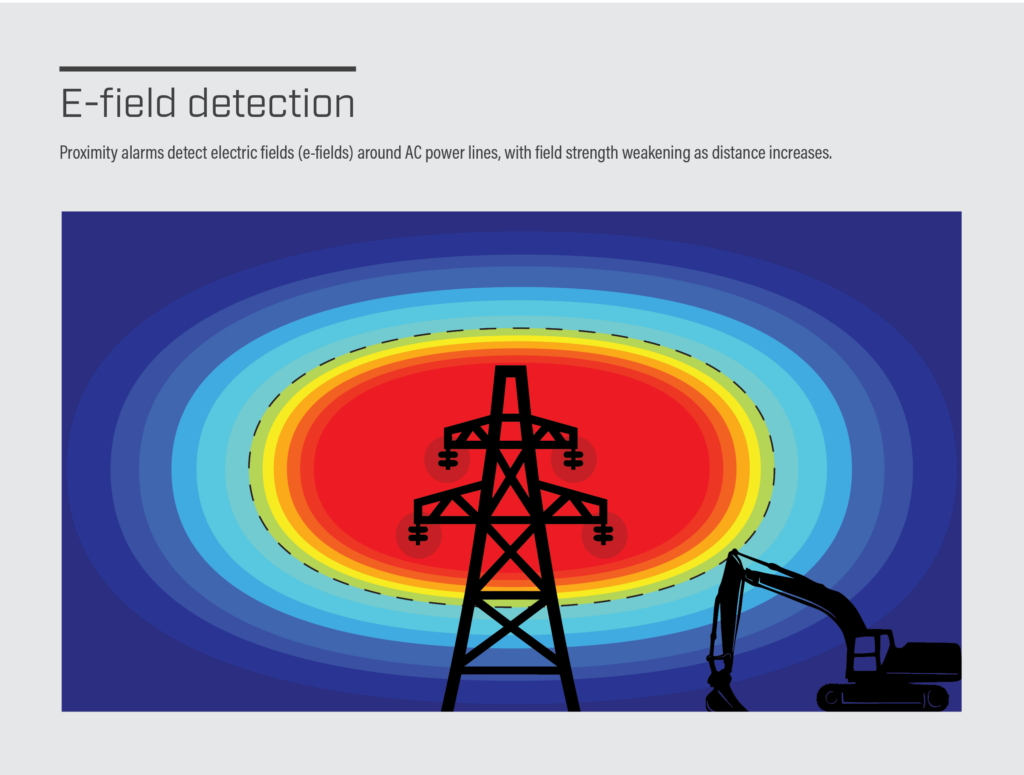
Seamless jobsite integration
Kiewit is prioritizing the seamless integration of these safety technologies, to make sure they enhance safety without complicating daily operations. Operators use an in-cab display to monitor the equipment’s proximity to hazards, with customizable alerts if safety boundaries are breached. This interface helps operators focus on their work, while the technology acts as a safeguard to prevent accidents.
“Our focus is on providing solutions that don’t create additional tasks for everyone. No one wants to adopt technology that adds more to their plate,” said Daenan Fairburn, equipment technology director. “The right solutions are those that do the job, intervene when necessary and provide management and supervisors with the tools they need — this is how we know we’ve selected the right approach.”
Developmental partnerships
Proximity sensors are relatively new technology and Kiewit’s collaboration with CAT has been key to incorporating this tool into operations. The company’s input, based on real-world jobsite experiences, has contributed to improvements that address diverse operational challenges and helps keep the technologies user-friendly.
“We provide the voice of the customer. CAT takes that information and uses it to drive their strategic initiatives,” Fairburn said. “They ask for pain points, and we give them our experience to help improve these tools.”
This collaboration between contractor and manufacturer has led to refinements, including adjustments for different powerline voltages, ensuring the sensors work effectively under a wide range of conditions.
What’s next
Looking ahead, Kiewit is exploring advanced 3D systems capable of detecting powerlines, underground utilities and other hazards. Unlike current 2D systems, which require operators to manually set limits based on their surroundings, these next-generation technologies aim to provide fully integrated solutions that anticipate and mitigate risks in real time. Kiewit has already demoed 3D equipment that holds great potential. By embracing these innovations, Kiewit continues to set new benchmarks in safety, equipping its teams with tools that build confidence and ensure a safe working environment.
